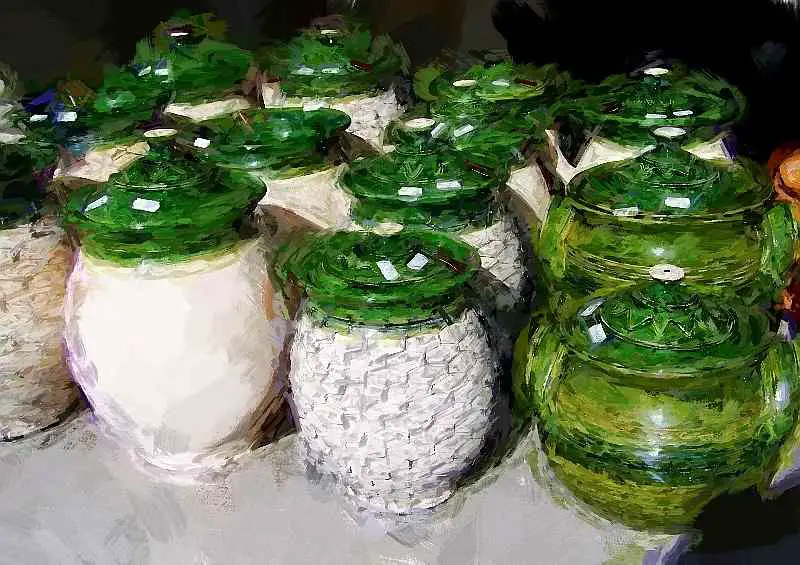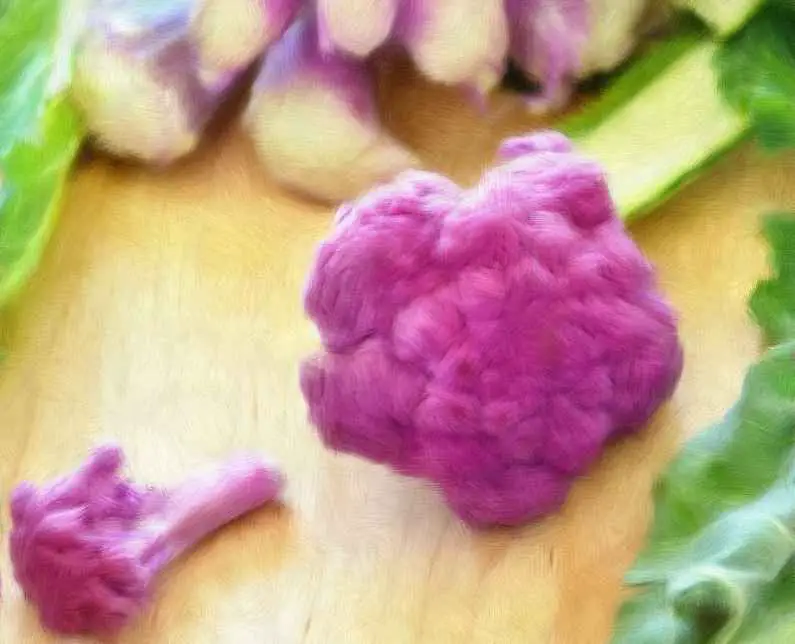Fermentation Container – Which One Is Right For What?
Canning jars, glass jars, water sealed crocks, open crocks, kimchi containers… what is the right fermentation vessel for your project? Let’s find it out
Choosing the best fermentation container for your project is just as important as choosing the right produce.
This is because every fermentation vessel is meant to be used in a specific way and with a specific purpose.
You certainly can not, or should not, use a glass carboy to lacto ferment vegetables or an open earthenware crock to brew watermelon wine.
To each their own they say.
But before looking at fermentation containers one by one allow me to address some of the most common questions about the dos and don’ts of choosing the vessel for your necessities.
Fermenting In Plastic Containers?
Theory says you can lacto-ferment vegetables like sauerkraut and others in a plastic container but the question is:
should you?
My personal opinion is that you should not.
In fact ALL plastics, including HDPE, LDPE and PET, as confirmed by this study, leaches chemicals into solids and liquids.
Some of these chemicals are already known and have been proven to be TOXIC in vitro, whilst thousands more still remain unidentified.
TELL YOUR FRIENDS
Fermenting In A Plastic Bucket
It is not uncommon to see, especially on websites and videos, people fermenting vegetables in plastic buckets.
We have already expressed our view about plastic as a material for fermentation and we reiterate that we advise you against using it.
But if you still intend to go ahead please follow these recommendations.
Number one thing: make sure you ONLY use food grade.
[adinserter name=”In Content 1″]
Too many people seem to go with whatever bucket they have handy including paint buckets and those that were used for chemicals.
Number two: make sure the bucket you use is BRAND NEW.
And by that I mean you should not buy it second hand or recycle the one your neighbour just gave you.
You can never know what they have been used for and if the content has somehow corroded the plastic.
Number three: keep the bucket in darkness or at least away from sunlight.
UV radiation is known to degrade plastic very quickly.
Fermenting In A Zip Lock Bag
Another fermentation container commonly spoken about in many groups around the web is the zip lock bag.
And also freezer bags and vacuum seal bags.
I cannot deny that, if done properly, fermenting both fruits and vegetables inside these containers can be very practical, economical and easy.
Plus, given their transparent nature, they allow you to keep a close eye on your food without the need to open them.
Furthermore, zip lock, freezer bags and vacuum seal, are all very easy to airlock and rarely explode.
[adinserter name=”In Content 2″]
So yes, they offer undeniable and undisputable advantages to fermenters of all levels, and particularly to beginners.
But they also offer an even more undeniable disadvantage that alone counters all the positives: they are made of plastic.
A very thin plastic that can easily be corroded and “eaten” by the salty and acidic food it contains.
Especially considering that we don’t use them to simply store food for a couple of days, but that every time we ferment we do so for weeks or even months.
So, same as for the plastic bucket, we advise against using them, but, if you really want to go down this path, at least make sure to use food grade plastic bags.
Too many times I have read on the web about people using anything from shopping bags to garbage bags to ferment their food.
Don’t do that.
Just don’t.
The chemicals contained in food grade plastic are bad enough, believe me.
Can You Ferment In Stainless Steel?
The simple answer is yes, but it really depends on what you are going to ferment.
Professional wine makers and beer breweries, for example, usually ferment inside stainless steel containers.
On the other hand, commercially made fermented vegetables are never fermented in such containers ( and if you know someone who does stop buying their product )
[adinserter name=”In Content 3″]
So thumbs up for everything that follows the yeast/fungal pathway turning sugar into alcohol but thumbs down for what ferments thanks to salt.
Salinity can, in fact, corrode steel and so does high acidity.
That’s why vinegar should not be fermented or stored in such containers.
Best Vessel To Lacto-Ferment Vegetables
The most commonly used types of fermenting containers, which also happen to be the safest, are the following four:
- glass jars
- open crocks
- water sealed crocks
- kimchi containers
In my view some of them are more suitable for beginners and, as it is with everything else, all of them have pros and cons.
So let’s see them one by one.
Would You Like
YOUR FERMIE LIFE
To Be EASIER?
Our FERMENTATION
PRINTABLES Will Do
Exactly That.
GLASS JARS
Glass jars, often known as canning jars, are probably the most widely used fermenting vessel and the simple reason for it is that they are just great for the purpose.
They are also the most beginner friendly so if your journey into fermentation has just started, glass jars will be your best friend.
Which glass jars should you choose?
[adinserter name=”In Content 4″]
I and many others can swear by Bormioli Fido Jars or Le Parfait Jars as they alone can guarantee you a successful fermentation in 99% of cases.
You can read more about the reasons why in this article, if you wish.
Now let’s see together the PROS & CONS of using glass jars as your fermentation vessel.
PROS
- Very easy to clean also from smells and odours
- Can be easily sterilised
- Allow you to make small batches
- Allow you to check the ferments without unsealing
- Easy to store
- Inexpensive
- Last forever
- Are multipurpose
- Environmentally friendly
- Can easily be recycled
CONS
- Lids and gaskets might need to be changed relatively often
- Being made of glass they are breakable
- Light can reach the produce
- Hard to place produce inside a small mouth jar
- Some types will require burping
WATER SEALED CROCKS
Water sealed crocks, just as the name suggests, use water to create an airtight container.
It is very cleverly shaped, in fact, the lid, smaller than the crock mouth, sits on the inner edge of a canal that, once filled with water, seals off the vessel.
Water, whilst working as a barrier to oxygen, will also allow CO2 to escape.
In most cases this type of fermenting crock is made with natural earthenware materials like ceramic and porcelain making them a very eco friendly material.
Attention should be put on the glazing that could contain chemicals.
It is also fairly common to see them made with glass, especially if we look at those traditionally used in Asian countries.
They are usually referred to as Chinese water seal jars and they are, in our view, a better choice than the western version made with ceramic.
They are transparent, lighter in weight and better engineered to seal.
Water sealed vessels are recommended for intermediate and advanced users as they require constant attention and maintenance.
But if you were to make pickles the traditional way, this would be the container to choose.
PROS
- Natural materials
- Eco friendly
- Big batches at once
- Light cannot reach the produce
- Easy layering and placing of produce thanks to the size
- Do not need burping
- Can ferment whole vegetables
CONS
- Constant care and maintenance
- Fairly high risk of mould growing
- Cannot check ferments without opening
- Water can spoil
- Only big batches at once
- Hard to store
- Expensive
- Odours not so easy to remove
- Heavy to lift
OPEN CROCKS
Just as their relative mentioned above, open fermenting crocks are usually made with clay or ceramic but are often seen made with glass.
What differentiates them from the previous group is the fact that they have NO LID, which means there is no inbuilt way to seal them.
The clear issue with not having an inbuilt system to air tighten the crock, is that the risk of mould is exponentially higher.
Because of this, open crocks are only suitable for short fermentations or for the first stages of longer ones.
After that produce will have to be transferred to a safer container.
For these reasons fermenting vessels belonging to this group are recommended only for advanced and experienced fermenters.
In all fairness, though, it should be mentioned that open crocks are the best container to make sauerkraut following the traditional method.
PROS
- Easy to clean
- Less expensive than water sealed ones
- Natural materials
- Fit whole vegetables
- Best for sauerkraut
- Big batches at once
CONS
- Very prone to mould and spoilage
- Not possible to seal it
- Only for short ferments
- Produce needs to be transferred
- Big batches only
- Heavy to lift
- Difficult to store
KIMCHI CONTAINERS
Although quite widely used for many lacto-fermentations beside kimchi, I would advise against using this type of container.
The main reason for it is that they are generally made of plastic, more specifically polypropylene.
Many people have also experienced first hand how difficult it is to clean them, especially from smells and odours.
Trust me, if you make kimchi or sauerkraut you want that smell gone from your vessel asap!
But the problems don’t stop there.
The inner container has an inbuilt plug that should push produce down and keep it submerged to create an anaerobic environment.
The intentional “should” is because many have opened the vessel just to find their beloved kimchi all fuzzy and mouldy.
Apparently, the infamous plug can also prevent CO2 from being properly released forcing the gas to find alternative ways to escape from the lid.
In fact fellow fermenters have more than once found the inner lid unsealed, moved and even lifted up.
TELL YOUR FRIENDS
With all this in mind I really cannot find enough PROS in this fermenting container to balance the CONS out.
And now let’s see which fermenting vessel is going to bring home the first prize both for vegetables and fruits.
… drum roll…
THE GLASS JARS!
We hope this post has given you a clearer idea and that you feel more confident in choosing a suitable container for your next ferment.
If you have already been using these or any other type of vessel let us know about your experience; we are very interested in knowing if and how they worked for you.
Have a wonderful day.
See you soon.








Hi, thanks for the tons of useful info! I tried to join the community but got no email in confirmation. Please advise what else I need to do.
The pleasures of technology!!!!
I have added you manually so you’re fine. Apologies for the malfuction.